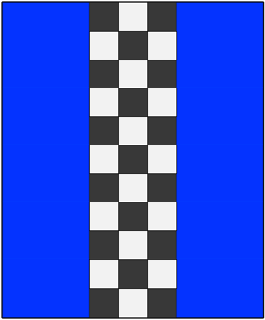75 degrees = 68 degrees. No wonder I couldn’t get things to adhere well sometimes.
As a side note, the temp varies wildly along the plate base. An enclosure would definitely help here.
Has anyone else tested the actual temps versus the set/displayed temps and noticed a difference?
Keep in mind IR thermometers are sensitive to the reflectivity/emissivity of the materials they are used on, and the shiny PEI surface can be a bit tricky. Try measuring the temperature of a mirror that your warmed up with your hand and you’ll see a similar problem.
If you want to test more accurately, put some matte tape on the bed and then measure the temperature then.
That said there is also a chance for the heat bed to be a bit lower than target temperature, since the temperature control and feedback occurs at the bottom of the bed where the thermistor is, not at the top, and is separated by a layer of magnetic adhesive and coated metal.
Agree. Thing that matters is consistency of measurement, but thermistors tend to not drift very much. One thing for op to keep in mind is that thermistors tend to be mounted to the bottom of the bed and there will be some temperature difference between the bottom on the top - especially if the printer hasn’t had the opportunity to soak. The other thing to keep in mind is how the terminator is attached to the bed. On my i3 it was just a piece of kapton tape, which meant there was often an air gap between the thermistor and the bed. I’m sure this resulted in quite a bit of weirdness.
If you want to test more accurately, put some matte tape on the bed and then measure the temperature then.
hehe. I use dots left over from my first-layer test prints. or other 1-2 layer height plastics. it can be anything that’s thin, and not shiny.
The actual number is mostly meaningless. If you have adhesion problems just bump the set temp up by a few degrees. Also the temp will vary across the plate but also vary over time. As the heat soaks into the plate it will be more consistent across it so if there are hot spots now, it’s not a huge deal.
Well, you are supposed to adjust your slicer until you get a temperature where the plastic adheres consistently.
Knowing the real temperature doesn’t actually help, as the performance will vary with coating, printer placement, z-level adjustment, etc.
A lot of printers also heat the bed unevenly, so the temperature could be significantly higher in the centre of the build plate. This video shows it fairly well. You could try adding a few minutes delay to your start gcode after the printer thinks it’s reached the correct bed temp, to let it even out a little.
Here is an alternative Piped link(s): https://piped.video/watch?v=yPy0zDpmc5U
Piped is a privacy-respecting open-source alternative frontend to YouTube.
I’m open-source, check me out at GitHub.
I wouldn’t worry about the value difference too much but more the consistency. If you need 75 degrees on the edge then keep dialing up the temp until you get it.
It’s most likely only going to affect large prints at the end of the day.
Your printer will measure the bed from a single location so moving your IR sensor will vary across the bed. If your using a custom firmware I’m sure you could set this as an offset assuming your IR thermometer is accurate ;)
Heat of the bed will be the warmest point and the periphery cooler (just like your body temp)
Adhesion I’d totally recommend cleaning your surface with soap and water (surface depending) and then messing with temps. With abs and petg I’ve found that even a bit of finger print residue is enough to cause a part to come away from the bed, next I’d check first level height. I’ve very rarely found the bed temp to be the reason I lost adhesion.
I use PETG on a PEI sheet like OP has. It will stick so hard that it rips the PEI off of the metal plate if I don’t put some hairspray down as layer in between.
I think you might be using the IR gun incorrectly.
The area which is being measured may be partially off the edge of the bed.
Yeah tbh it didn’t really matter what the number is tube by results not input. If you only get bed adhesion at 80°C there’s probably an underlying issue but rock what you got. Haven’t tested mine there’s probably a variance off true value for a lot of people. No one can deny the results you observe. If people say say it to 75 and that’s too low based on your observations either fix your printer if you trust them or crank her up.
An enclosure might help a bit, but not a lot. What are you using for a plate, just spring steel? You will lose a small amount of heat to that. If it’s glass and steel, then you will lose more. The temperature sensor is pretty close to the actual heating element, and the heating coil doesn’t cover the entire bed, so there will be hotter areas and cooler areas—like an electric griddle if you’ve used one of those in a kitchen before.
Glass helps because it’s a good thermal conductor, but because it’s another layer to heat (and lose heat into) you need to bump the temperatures a bit, and it also comes with the caveat of weight, which isn’t ideal on a bed slinger.
Overall though, if you’re printing PLA and having bed adhesion issues at 68 degrees the temperature probably isn’t the issue.
Metal flex sheet is going to conduct heat differently than the Creality standard surface plus it’s shiny metal meaning it’s difficult to measure with IR If you are having issues, then up the bed heat
That is wicked smaht
I wonder if gluing down a thin layer of borosilicate glass would even out the hotspots as it comes to temperature? maybe place it between the magnetic base and the heater. it’d take longer to come up to temp, though.
that said, I expect my beds to be 10 degrees cooler than the thermister says- simply because the thermister location is usually closer to the heat source and covered from ambient air. it’s all relative anyhow, and every brand/formulation of filament is going to be slightly different as to what works best.
The edges are going to be cooler if everything is working the way it’s designed (especially on a bed slinger), since the heater doesn’t go all the way to the edges and because of increased airflow. One of the reasons I was thinking about getting a Prusa XL is because it has multiple independent bed heaters.
An enclosure will help some. When I’m printing near the edges I also up the bed temp 5 to 10 degrees depending on room temp.
What the heck are you printing that requires 75C of bed temp with no walls?
Nylon likes that bed temperature
I print PETG on a 80c bed
You must be used to getting elephants foot
No, my printer is calibrated.
I also print PETG at bed temperatures like this, no problems with it







